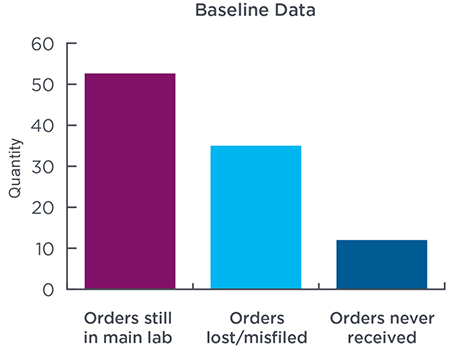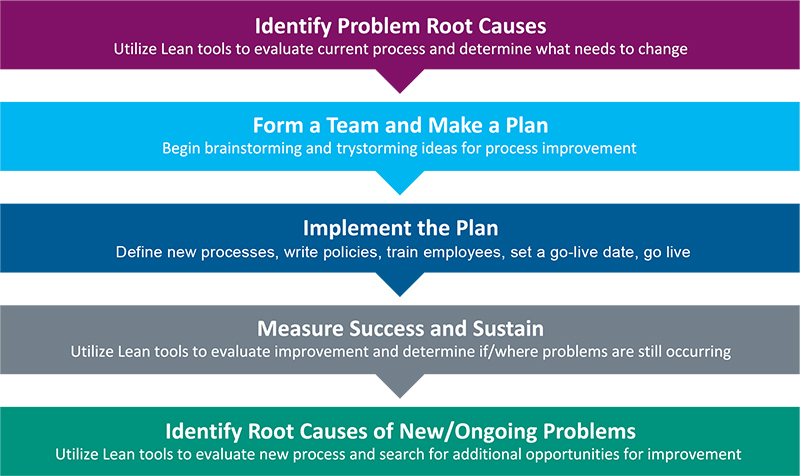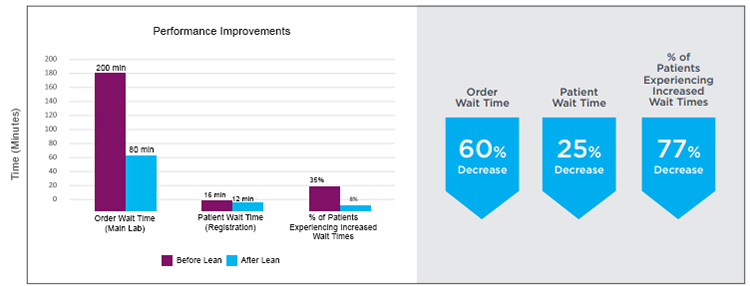Asante Ashland Community Hospital (Asante) is a 49-bed community hospital that features a birthing center and a surgery center, in addition to diagnostic imaging, laboratory and respiratory testing services. Outpatient services include internal medicine, home health and hospice care, wound care, and hyperbaric medicine.
Laboratory testing is an important component within Asante’s healthcare services. However, their laboratory ordering process was based on manual order transports and a registration file cart, as well as faxed orders and a faxed order-log spreadsheet at reception. There was no ability to place an online laboratory order.
The system in place was causing several customer service issues for Asante. Patients were experiencing long waits to receive results and health care. Also, laboratory orders were frequently misfiled. This misfiling delayed order fulfillment—further elongating wait times—and posed a potential risk of preventable errors. (See Figure 1.)
Issues with the Order Management System

Figure 1. The laboratory experienced a high amount of lost, misfiled and missing orders prior to their new order processing system.
Issues with the laboratory order processing system were impacting patients and providers. The hospital needed to make changes.
Collaboration and solutions
Asante collaborated with the Beckman Coulter performance partnership team to achieve several specific goals:
- Shorten laboratory-related wait times after patients arrive
- Reduce lead time for orders to be filed
- Lower the number of lost or duplicate orders
To address the issues, the laboratory used a problem-solving process that began with identifying the cause of the problem, which could then guide a sustainable countermeasure. (See Figure 2.)
Steps in the Problem-solving Process

Figure 2. This sequence of problem-solving steps helped Asante transform their order management system.
As a result of the problem-solving process, the team focused on two overarching activities:
- Eliminating manual order transports, the registration file cart and the fax order-log spreadsheet
- Becoming a HIPPA-compliant system
Digitizing the manual process
Asante’s new process entailed that all fax-received laboratory orders would be scanned into a centralized digital location. Both the laboratory and registration staff would be able to access the location.
This new digital process eliminated manual filing, which sometimes resulted in misfiling and risk for medical error. Making the scanned order images searchable by patient name and date of birth also made viewing multiple orders for a single patient easier.
Creating standard work
For the new digital process to be successful, all staff would need to complete the same tasks the same way.
The solution was to expand the use of Meditech software features, a laboratory software package already implemented at Asante. In the clinical outpatient scheduling module, the laboratory created a scheduled clinical account for each patient with an order on file. Staff would then scan orders for each patient into the appropriate corresponding scheduled accounts.
From an organizational process change perspective, the laboratory needed to install Meditech scanners throughout the hospital’s departments. Phlebotomy and clerical staff were granted access to the tool. Standard work details were developed along with policies and procedures for phlebotomy, registration and laboratory clerical staff to follow for improved consistency.
When it was time for deployment, the team generated core competency checklists for all affected staff members to follow. This gave the team actionable and reportable insights on organizational readiness.
 English
English





